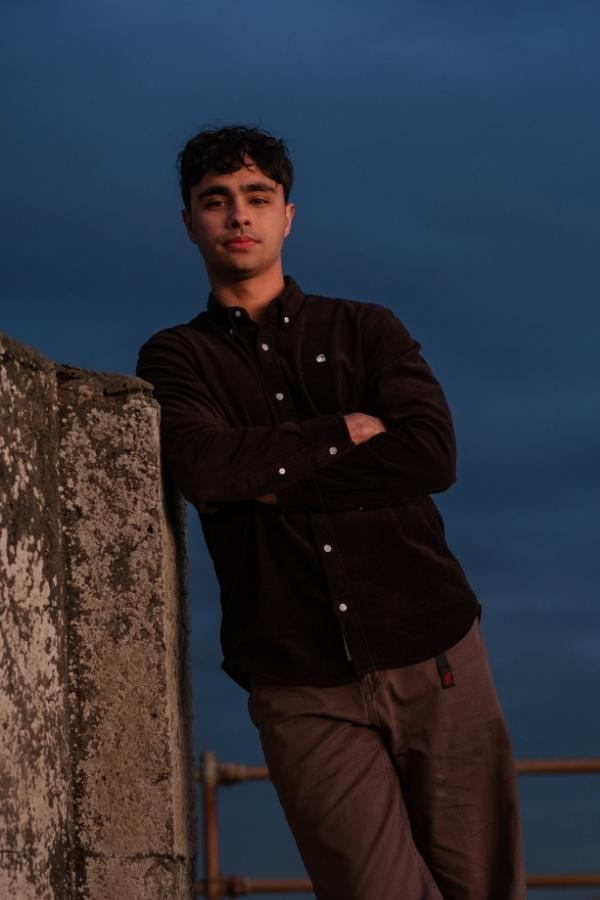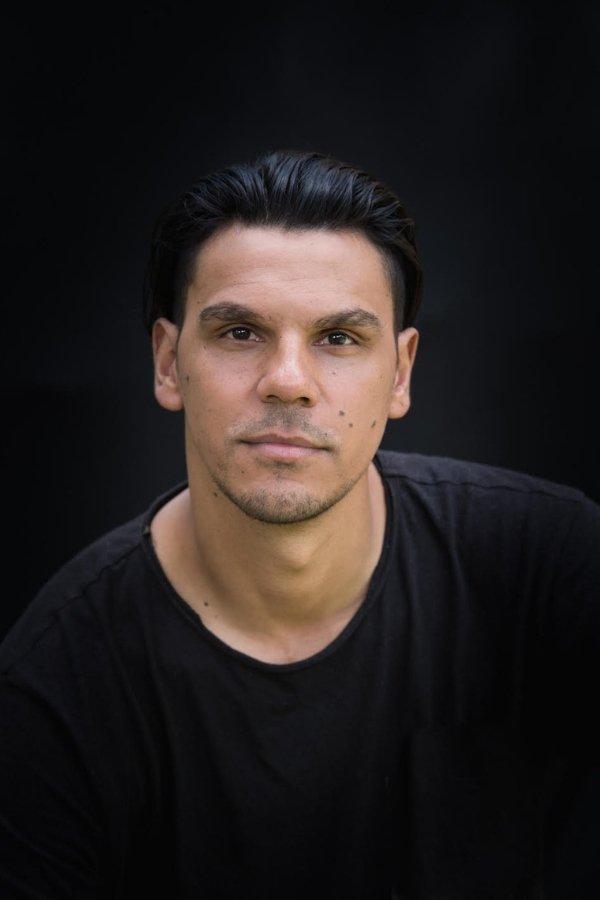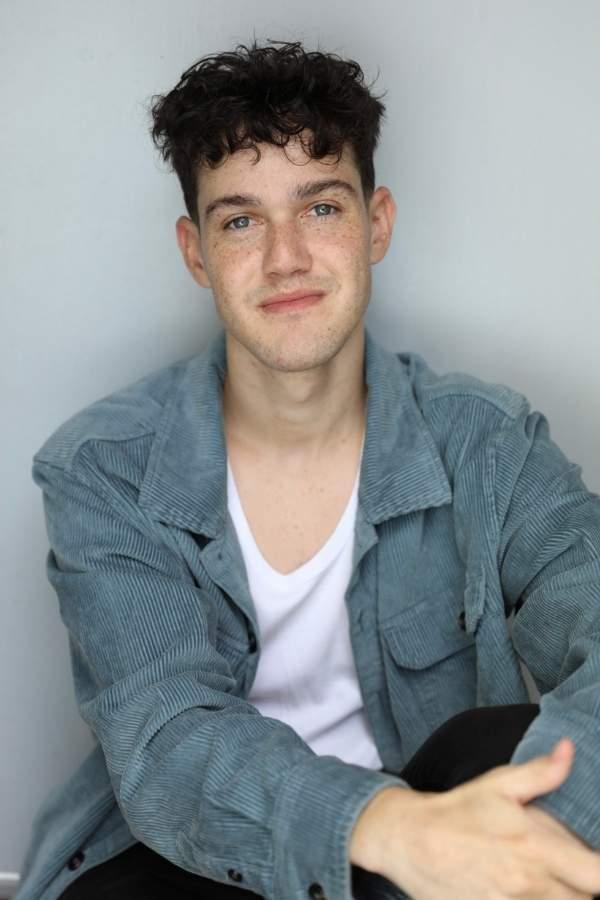When Thomas Weatherall first introduced 'Blue' to audiences, it was clear this was a quiet, emotional reckoning wrapped in poetic storytelling.
Written by the 'Heartbreak High' star and proud Kamilaroi man, 'Blue' captures the intimate internal world of a young man standing at the crossroads of grief, identity, and hope. Raw, lyrical, and deeply personal, it explores the universal ache of growing up, the silence that often surrounds mental health, and the profound weight of loss when it hits close to home.
At the centre is Mark – a student alone in his apartment, grappling with the impossible task of going on with an ordinary day after receiving devastating news. The piece unfolds through his memories and reflections, sparked by letters from his mother that once tethered him to home and now echo with painful significance. 'Blue' invites the audience into Mark’s fragile, thoughtful world, one where emotion lingers in every pause, and healing is found not in grand gestures, but in quiet resilience.
This latest staging brings Weatherall’s words to the fore with a fresh energy. Under the direction of Ian Wilkes, and brought to life by rising performer Owen Hasluck, the production honours the stillness and vulnerability at the heart of the script while also carving out its own cultural and artistic identity. The result is a tender monologue – a life-affirming deep five into a young person's journey.
We caught up with Ian and Owen ahead of the show’s run in Perth.
'Blue' navigates the intricate dance between grief, mental health, and the transition into adulthood. How have you both approached translating these profound themes into a compelling stage experience for Perth audiences?
Ian: 'Blue' is such an incredible piece of writing that not much translating is required in regards to the text, we have explored these themes through emotional energy and movement dynamics, it is incredibly generous in allowing space for physicality but also stillness and silence.
Owen: For me it’s about telling the complete honest truth, and how hard that is for people to do. But in that it’s about the dance of the healing cycle that Mark must go through, and by extension everyone that goes through these things. Because we all try to heal, we all just do it at our own pace, and that’s what I believe makes it a compelling stage experience; how can one person heal in one show. We’ve played with the idea of how can you tell a story without saying anything, which is so profound but it’s also what every single person does.

Thomas Weatherall
Ian, as the director, how did you envision the interplay between the minimalist set design and the emotional depth of Mark's journey? Were there specific elements you emphasised to enhance this relationship?
The script has incredible imagery within the narrative. The character Mark brings to life each memory with poetic endowment. These moments are our true set. Using a semi-minimalist approach gives us a canvas to allow for this. We also applied abstract elements into the design which helps us lean into a more stylistic approach.
Considering ‘Blue' is a solo performance, for both of you, how did your collaboration shape the rhythm and pacing of the narrative to maintain engagement/emotional resonance throughout?
Ian: We use the motions to track the journey of each scene and what that might mean for the entire play. A lot of rehearsal time was used to discuss what energy or emotion needs to be presented or when it can be stripped away. In the early creation it was essential to explore the limits of where we can take it. We then came to realise that the play is so versatile. It can be portrayed in a variety of ways.
Owen: The whole show is a collaboration, because I am only one part of the machine that is 'Blue', I can only do what I think works, but I can’t see that or hear that and that’s what the rest of the room helps with. They let me know what’s landing and what isn’t, and they challenge me to push ideas further and push the boundaries of what we traditionally play with on stage in terms of pace and rhythm. I chuck an idea out and we work it and find a place for it, it’s such an amazing space to be in because I can just make choices, whether they work or not.
Portraying Mark requires delving into intense emotional landscapes. Owen, how have you prepared to authentically represent his struggles with mental health and familial relationships?
I found that acknowledging my own struggles has helped me be able to be able to represent Mark. I’m not perfect and I don’t know if anyone is, but in our imperfections, we are completely human. Knowing that I am imperfect I found comfort in the idea that there is no ‘perfect’ way to act the show out, but I found a comfort in showing my authenticity and my personal ways of struggling and navigating with mental health issues, and how we all deal with things in our own unique and complicated ways. This has allowed me to ease my way in and out of the subject matter and not take it home with me.

Ian Wilkes
The original production incorporated water imagery and dynamic lighting to reflect Mark's memories and emotions. Ian, how have you adapted or reimagined these elements for the Perth stage?
I have tried not to reference the original production in my process. I have started with a clean slate in regards to lighting and many design elements. It is an entirely different approach and I think that's okay. The script is so generous in this regard. We are working with tones and shades rather than colour and the set also has some incredible images to help aid this.
Ian, what drew you to direct ‘Blue', and how did Thomas Weatherall's background as a Kamilaroi man and his personal experiences influence your directorial approach?
It's an incredible story, simple as that. It's human. I was no way influenced by any cultural background. Yes Tom is Kamilaroi, but this really had nothing to do with my decision to direct. I am Noongar. We are different. This 'one mob' mentality only connects us in certain issues but not really in this space. The production is surrounded by many First Nations artists and that's deadly but internally the work does not directly reference 'black theatre', which is somewhat refreshing.
Bringing ‘Blue' to Perth introduces it to a new audience. How have you each tailored the performance to resonate with the local community, while preserving the play's core message?
Ian: The play's core message will resonate with any audience, anywhere. We've not tailored it to suit Perth, but simply allowed our collaborative experiences to inform what is being presented.
Owen: While I can’t speak on anyone else’s behalf, for me, tailoring this for Perth audiences is not difficult. The script talks about love's complexities and the battles we all will inevitably face, and being in Perth I know so many people here who will have an immediate connection with the piece. In people connecting and understanding the subject matters in the play, the play's core message is preserved and very much kept alive.

Owen Hasluck
Solo performances demand a unique stamina and presence. Owen, what strategies have you employed to maintain energy and connection with the audience throughout the show?
They really do require something completely different from what I’m used to, and that’s such an amazing experience. From a strategical standpoint it’s all about energy and how much you give, as well as where it comes from. It’s all good me just giving energy for the sake of a performance, but I’ve got to do it from a safe place that is controlled by me. So every day, I take a couple moments to just find where that energy is and how I can facilitate making it healthy and connected, in doing that it subconsciously helps relax everything else and therefore leads to a connection to myself and the story, and allows me to maintain an energy for not just the show but the rest of the day.
Ian, reflecting on the rehearsal process, have there been any unexpected discoveries or shifts in perspective that emerged as you delved deeper into the material with Owen?
Rhythm and pace is something we found was vital. Surprisingly, it took a long time to realise this, and only when we started running the show in its entirety, did we understand that dynamic speed is required in moments. Transitions into different energy was a struggle sometimes, so changing the energy of some scenes was needed to benefit the show holistically.
How have you each balanced honouring Thomas Weatherall's original vision, with infusing your own interpretations and insights into the production?
Ian: Respecting the story was priority for me. The text is so beautiful so honouring the text was said a lot in rehearsal, so that's the balance we've been exploring and trying to get right. Stylised movement is another form we use as we flow in and out of text.
Owen: I think the text is so beautiful and brilliantly written. It’s so clear to see everything Thomas has put into this play, and it’s so easy to be transported to where he wants you to be with it. That being said it is, for me, all about honouring that, and acknowledging we all experience these things completely differently, but in that I can infuse my own interpretations and insight.
'Blue' plays State Theatre Centre Of WA 23 May-8 June.






